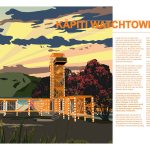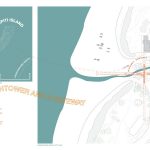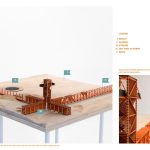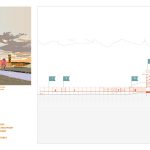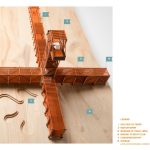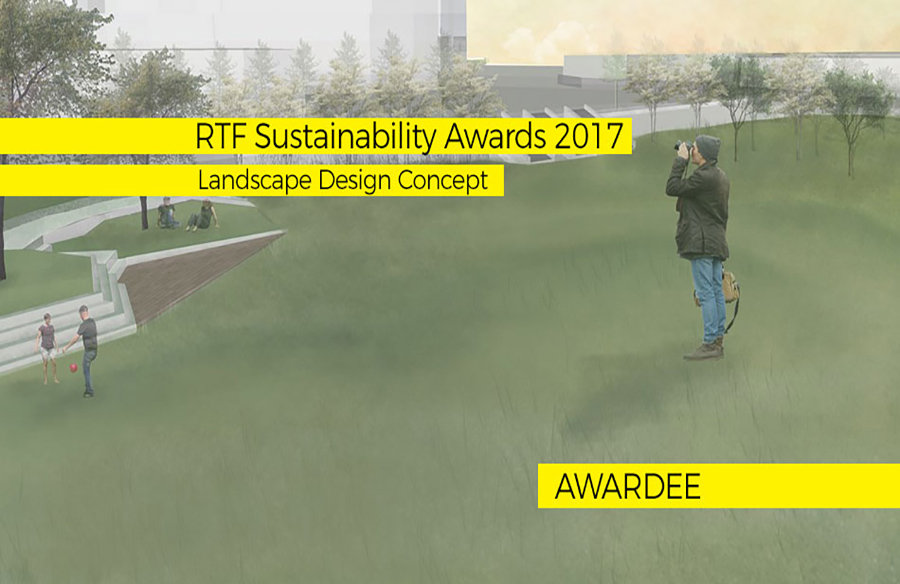Kapiti Island is an island bird sanctuary approximately 5km off the west coast of the lower North Island of New Zealand. Access to the island is by approved tour operators only. Because of the long shallow beach on the mainland it is not feasible to build a pier for visitors to board the boats, so visitors get onto a boat while it’s on the trailer which a tractor then reverses into the sea.
Global Architecture & Design Awards 2018
Second Award | Transportation (Concept)
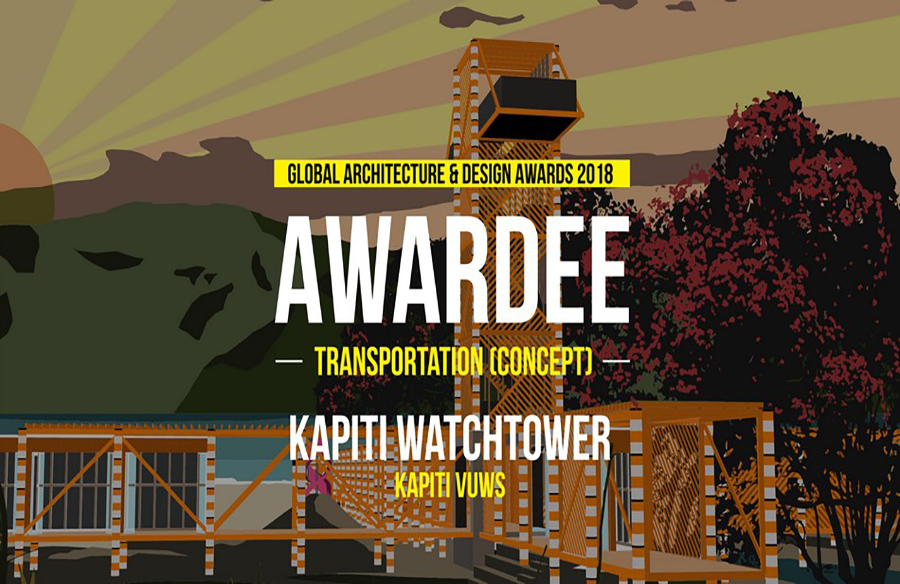
| Project Details | |
| Architects: | Kapiti VUWS |
| Team Members: | Sam Kebbell, Cam Wilson, Callum Leslie, Martin Bryant |
| Country: | New Zealand |

©Kapiti VUWS
Biosecurity for the island is critical for the ongoing protection of bird species on the island. Visitor numbers to the island are set to grow significantly yet there is currently no visitor centre, and no permanent biosecurity checkpoint. It is a dynamic site, and it will be increasingly so as the effects of climate change begin to be felt in the form of sea level rise and more frequent storm surges.
The brief for this project was to develop a boat terminal on the dynamic mainland coast where visitors could learn about changes to the local environment, conservation work on the island, and proceed to the boats through a permanent biosecurity checkpoint.
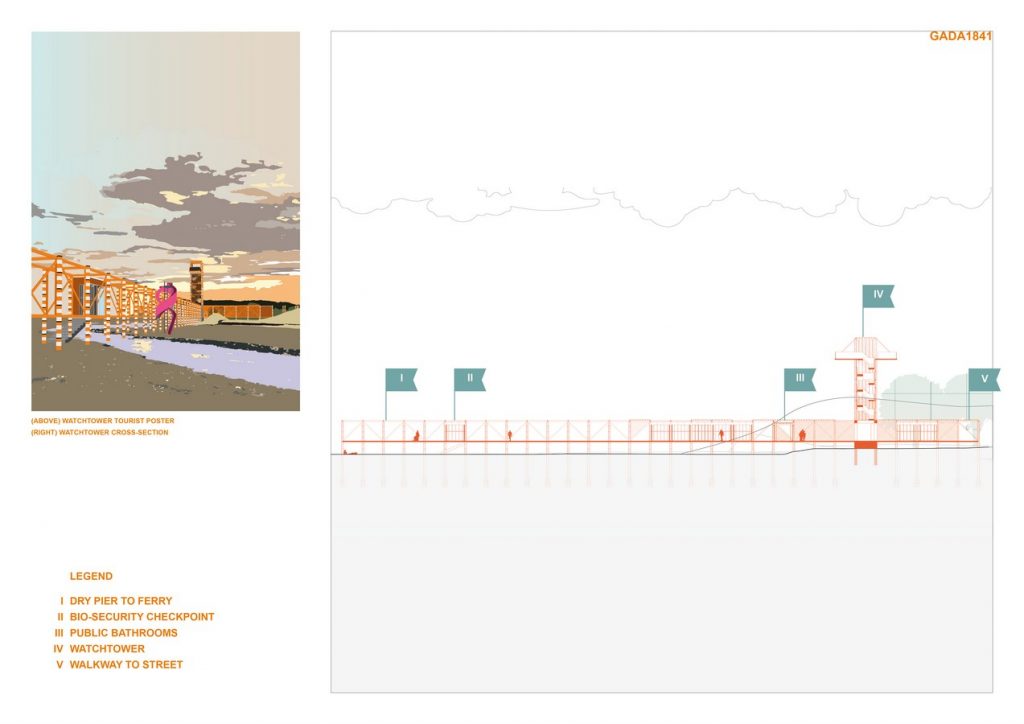
©Kapiti VUWS
Aggregated data is a big part of how we see nature now, but it is not normally a big part of how we experience it through architecture. The objective of this proposal was to develop a nature tourism building that brings the experience of a natural environment together with aggregated data about how that environment is changing. We set out to tackle these questions: How might an architectural language serve the collection of data? How might tourist behaviour facilitate data collection? How might we present it architecturally?
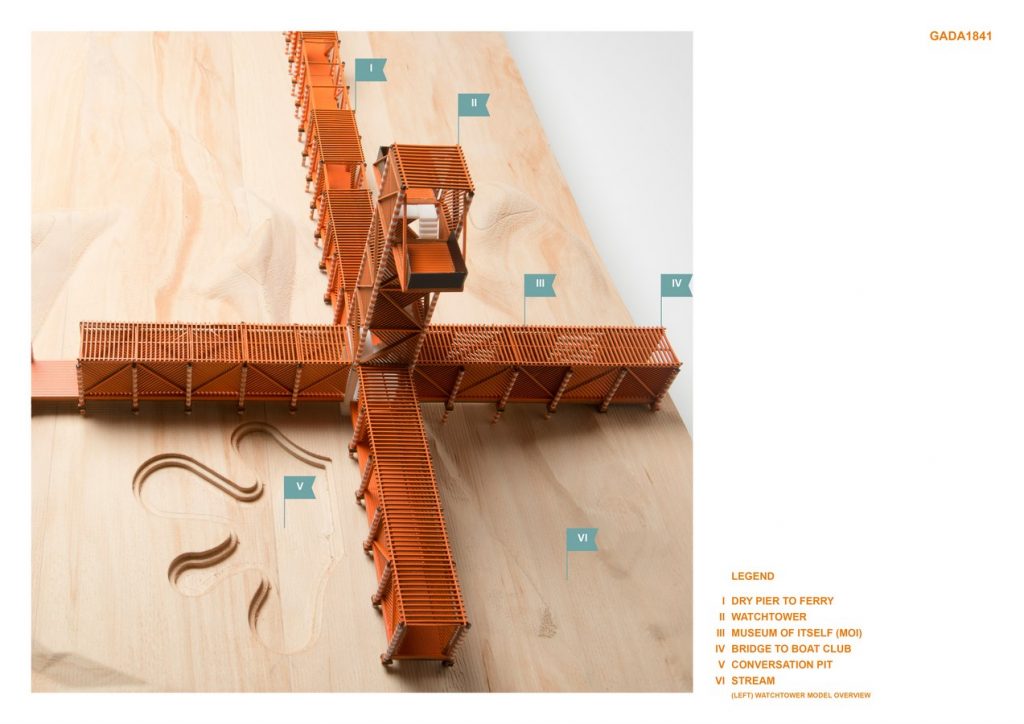
©Kapiti VUWS
The resulting proposal is organised around the axes of a three-dimensional grid system aligned to cardinal points of the compass. Within each axis are a number of small kiosks. These accommodate a café, store, bio-security checkpoint, information centre, and what we have called, a Museum of Itself (MOI). Selfie culture has put the tourist themselves into the foreground of their own gaze. Rather than resent this as a narcissistic turn, we propose to use it. The MOI is a space to exhibit selfies taken by visitors in front of the Kapiti Watchtower. The timber poles that repeat across the whole structure have stripes at 250mm intervals, so the photos would reveal measurable changes to the sand dunes, tides, vegetation, stream, and the buildings in the village behind it. Our proposal therefore, re-deploys the indulgent culture of selfies as a tool for environmental observation. The selfies would collect over the life span of the building into a visual database of environmental change displayed in the MOI.
- ©Kapiti VUWS
- ©Kapiti VUWS
- ©Kapiti VUWS
